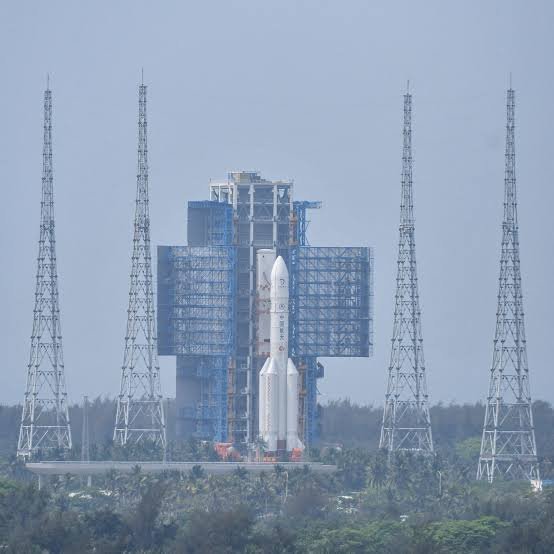China to launch historic probe to retrieve moon’s Far side samples

China is poised to make history on Friday with the launch of a probe aimed at collecting samples from the far side of the Moon, marking a significant milestone in Beijing’s ambitious space exploration agenda.
Scheduled for liftoff from the Wenchang Space Launch Center in southern China’s Hainan province just before 5:30 pm (0930 GMT), the Chang’e-6 lunar probe represents a groundbreaking endeavor amidst China’s strategic push towards a crewed lunar mission by 2030.
The Chang’e-6 mission, a technically intricate 53-day operation, seeks to retrieve approximately two kilograms of lunar samples from the Moon’s far side, marking the first-ever collection from this enigmatic region. Notably, the mission includes the unprecedented challenge of launching from the side of the Moon perpetually facing away from Earth, showcasing China’s prowess in tackling complex space exploration feats.
Ge Ping, vice director of China’s Lunar Exploration and Space Engineering Center, emphasized the significance of this mission during a press briefing, highlighting the probe’s intended landing site within the vast South Pole-Aitken Basin, one of the solar system’s largest known impact craters. Upon touchdown, the Chang’e-6 will conduct vital experiments in the landing zone before embarking on its return journey to Earth.
Under President Xi Jinping’s leadership, China’s “space dream” has surged forward with vigor, underscored by substantial investments in the nation’s space program over the past decade. From constructing the Tiangong space station to deploying robotic rovers on Mars and the Moon, China has rapidly solidified its position as a formidable player in space exploration, with aspirations to establish a lunar base by 2030.
China’s assertive strides in space have reverberated globally, prompting attention and concern, particularly from traditional space powers like the United States. With plans to send astronauts back to the Moon through the Artemis 3 mission by 2026, the U.S. finds itself in a perceived “race” against China, as articulated by NASA administrator Bill Nelson, who raised apprehensions regarding China’s purported military objectives within its civilian space endeavors.
The Chang’e-6 mission represents the inaugural phase of China’s ambitious lunar exploration roadmap, with subsequent missions, including Chang’e-7 and Chang’e-8, slated to delve deeper into lunar exploration. Chang’e-7 aims to investigate the presence of water at the lunar south pole, while Chang’e-8 will explore the feasibility of establishing the International Lunar Research Station, envisioned as a pivotal outpost for scientific endeavors.
Scientists anticipate groundbreaking discoveries from the Moon’s dark side, characterized by its unobstructed craters and potential insights into the celestial body’s formation. Geological samples retrieved by Chang’e-6 hold immense promise, offering a glimpse into the Moon’s geological history spanning approximately 4 billion years, thereby enriching humanity’s understanding of lunar evolution and the broader cosmos.







